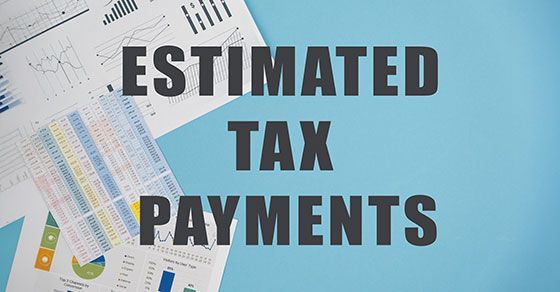2025 tax calendar
To help make sure you don’t miss any important 2025 deadlines, we’re providing this summary of when various tax-related forms, payments and other actions are due. Please review the calendar and let us know if you have any questions about the deadlines or would like assistance meeting them.
January 31
Businesses: Provide Form 1098, Form 1099-MISC (except for those with a February 18 deadline), Form 1099-NEC and Form W-2G to recipients.
Employers: Provide 2024 Form W-2 to employees.
Employers: Report Social Security and Medicare taxes and income tax withholding for fourth quarter 2024 (Form 941) if all associated taxes due weren’t deposited on time and in full.
Employers: File a 2024 return for federal unemployment taxes (Form 940) and pay tax due if all associated taxes due weren’t deposited on time and in full.
Employers: File 2024 Form W-2 (Copy A) and transmittal Form W-3 with the Social Security Administration.
Individuals: File a 2024 income tax return (Form 1040 or Form 1040-SR) and pay any tax due to avoid penalties for underpaying the January 15 installment of estimated taxes.
February 10
Employers: Report Social Security and Medicare taxes and income tax withholding for fourth quarter 2024 (Form 941) if all associated taxes due were deposited on time and in full.
Employers: File a 2024 return for federal unemployment taxes (Form 940) if all associated taxes due were deposited on time and in full.
Individuals: Report January tip income of $20 or more to employers (Form 4070).
February 18
Businesses: Provide Form 1099-B, 1099-S and certain Forms 1099-MISC (those in which payments in Box 8 or Box 10 are being reported) to recipients.
Employers: Deposit Social Security, Medicare and withheld income taxes for January if the monthly deposit rule applies.
Employers: Deposit nonpayroll withheld income tax for January if the monthly deposit rule applies.
Individuals: File a new Form W-4 to continue exemption for another year if you claimed exemption from federal income tax withholding in 2024.
February 28
Businesses: File Form 1098, Form 1099 (other than those with a January 31 deadline), Form W-2G and transmittal Form 1096 for interest, dividends and miscellaneous payments made during 2024. (Electronic filers can defer filing to April 1.)
March 10
Individuals: Report February tip income of $20 or more to employers (Form 4070).
March 17
Calendar-year partnerships: File a 2024 income tax return (Form 1065 or Form 1065-B) and provide each partner with a copy of Schedule K-1 (Form 1065) or a substitute Schedule K-1 — or request an automatic six-month extension (Form 7004).
Calendar-year S corporations: File a 2024 income tax return (Form 1120-S) and provide each shareholder with a copy of Schedule K-1 (Form 1120-S) or a substitute Schedule K-1 — or file for an automatic six-month extension (Form 7004). Pay any tax due.
Employers: Deposit Social Security, Medicare and withheld income taxes for February if the monthly deposit rule applies.
Employers: Deposit nonpayroll withheld income tax for February if the monthly deposit rule applies.
April 1
Employers: Electronically file 2024 Form 1097, Form 1098, Form 1099 (other than those with an earlier deadline) and Form W-2G.
April 10
Individuals: Report March tip income of $20 or more to employers (Form 4070).
April 15
Calendar-year corporations: File a 2024 income tax return (Form 1120) or file for an automatic six-month extension (Form 7004). Pay any tax due.
Calendar-year corporations: Pay the first installment of 2025 estimated income taxes and complete Form 1120-W for the corporation’s records.
Calendar-year trusts and estates: File a 2024 income tax return (Form 1041) or file for an automatic five-and-a-half-month extension (six-month extension for bankruptcy estates) (Form 7004). Pay any tax due.
Employers: Deposit Social Security, Medicare and withheld income taxes for March if the monthly deposit rule applies.
Employers: Deposit nonpayroll withheld income tax for March if the monthly deposit rule applies.
Household employers: File Schedule H, if wages paid equal $2,700 or more in 2024 and Form 1040 isn’t required to be filed. For those filing Form 1040, Schedule H is to be submitted with the return and is thus extended to the due date of the return.
Individuals: File a 2024 income tax return (Form 1040 or Form 1040-SR) or file for an automatic six-month extension (Form 4868). (Taxpayers who live outside the United States and Puerto Rico or serve in the military outside these two locations are allowed an automatic two-month extension without requesting one.) Pay any tax due.
Individuals: Pay the first installment of 2025 estimated taxes (Form 1040-ES) if not paying income tax through withholding or not paying sufficient income tax through withholding.
Individuals: Make 2024 contributions to a traditional IRA or Roth IRA (even if a 2024 income tax return extension is filed).
Individuals: Make 2024 contributions to a SEP or certain other retirement plans (unless a 2024 income tax return extension is filed).
Individuals: File a 2024 gift tax return (Form 709), if applicable, or file for an automatic six-month extension (Form 8892). Pay any gift tax due. File for an automatic six-month extension (Form 4868) to extend both Form 1040 and Form 709 if no gift tax is due.
April 30
Employers: Report Social Security and Medicare taxes and income tax withholding for first quarter 2025 (Form 941) and pay any tax due if all associated taxes due weren’t deposited on time and in full.
May 12
Employers: Report Social Security and Medicare taxes and income tax withholding for first quarter 2025 (Form 941) if all associated taxes due were deposited on time and in full.
Individuals: Report April tip income of $20 or more to employers (Form 4070).
May 15
Calendar-year exempt organizations: File a 2024 information return (Form 990, Form 990-EZ or Form 990-PF) or file for an automatic six-month extension (Form 8868). Pay any tax due.
Calendar-year small exempt organizations (with gross receipts normally of $50,000 or less): File a 2024 e-Postcard (Form 990-N) if not filing Form 990 or Form 990-EZ.
Employers: Deposit Social Security, Medicare and withheld income taxes for April if the monthly deposit rule applies.
Employers: Deposit nonpayroll withheld income tax for April if the monthly deposit rule applies.
June 10
Individuals: Report May tip income of $20 or more to employers (Form 4070).
June 16
Calendar-year corporations: Pay the second installment of 2025 estimated income taxes and complete Form 1120-W for the corporation’s records.
Employers: Deposit Social Security, Medicare and withheld income taxes for May if the monthly deposit rule applies.
Employers: Deposit nonpayroll withheld income tax for May if the monthly deposit rule applies.
Individuals: File a 2024 individual income tax return (Form 1040 or Form 1040-SR) or file for a four-month extension (Form 4868) if you live outside the United States and Puerto Rico or you serve in the military outside those two locations. Pay any tax, interest and penalties due.
Individuals: Pay the second installment of 2025 estimated taxes (Form 1040-ES) if not paying income tax through withholding or not paying sufficient income tax through withholding.
July 10
Individuals: Report June tip income of $20 or more to employers (Form 4070).
July 15
Employers: Deposit Social Security, Medicare and withheld income taxes for June if the monthly deposit rule applies.
Employers: Deposit nonpayroll withheld income tax for June if the monthly deposit rule applies.
July 31
Employers: Report Social Security and Medicare taxes and income tax withholding for second quarter 2025 (Form 941) and pay any tax due if all associated taxes due weren’t deposited on time and in full.
Employers: File a 2024 calendar-year retirement plan report (Form 5500 or Form 5500-EZ) or request an extension.
August 11
Employers: Report Social Security and Medicare taxes and income tax withholding for second quarter 2025 (Form 941) if all associated taxes due were deposited on time and in full.
Individuals: Report July tip income of $20 or more to employers (Form 4070).
August 15
Employers: Deposit Social Security, Medicare and withheld income taxes for July if the monthly deposit rule applies.
Employers: Deposit nonpayroll withheld income tax for July if the monthly deposit rule applies.
September 10
Individuals: Report August tip income of $20 or more to employers (Form 4070).
September 15
Calendar-year corporations: Pay the third installment of 2025 estimated income taxes and complete Form 1120-W for the corporation’s records.
Calendar-year partnerships: File a 2024 income tax return (Form 1065 or Form 1065-B) and provide each partner with a copy of Schedule K-1 (Form 1065) or a substitute Schedule K-1 if an automatic six-month extension was filed.
Calendar-year S corporations: File a 2024 income tax return (Form 1120-S) and provide each shareholder with a copy of Schedule K-1 (Form 1120-S) or a substitute Schedule K-1 if an automatic six-month extension was filed. Pay any tax, interest and penalties due.
Calendar-year S corporations: Make contributions for 2024 to certain employer-sponsored retirement plans if an automatic six-month extension was filed.
Employers: Deposit Social Security, Medicare and withheld income taxes for August if the monthly deposit rule applies.
Employers: Deposit nonpayroll withheld income tax for August if the monthly deposit rule applies.
Individuals: Pay the third installment of 2025 estimated taxes (Form 1040-ES), if not paying income tax through withholding or not paying sufficient income tax through withholding.
September 30
Calendar-year trusts and estates: File a 2024 income tax return (Form 1041) if an automatic five-and-a-half-month extension was filed. Pay any tax, interest and penalties due.
October 10
Individuals: Report September tip income of $20 or more to employers (Form 4070).
October 15
Calendar-year bankruptcy estates: File a 2024 income tax return (Form 1041) if an automatic six-month extension was filed. Pay any tax, interest and penalties due.
Calendar-year C corporations: File a 2024 income tax return (Form 1120) if an automatic six-month extension was filed and pay any tax, interest and penalties due.
Calendar-year C corporations: Make contributions for 2024 to certain employer-sponsored retirement plans if an automatic six-month extension was filed.
Employers: Deposit Social Security, Medicare and withheld income taxes for September if the monthly deposit rule applies.
Employers: Deposit nonpayroll withheld income tax for September if the monthly deposit rule applies.
Individuals: File a 2024 income tax return (Form 1040 or Form 1040-SR) if an automatic six-month extension was filed (or if an automatic four-month extension was filed by a taxpayer living outside the United States and Puerto Rico). Pay any tax, interest and penalties due.
Individuals: Make contributions for 2024 to certain existing retirement plans or establish and contribute to a SEP for 2024 if an automatic six-month extension was filed.
Individuals: File a 2024 gift tax return (Form 709), if applicable, and pay any tax, interest and penalties due if an automatic six-month extension was filed.
October 31
Employers: Report Social Security and Medicare taxes and income tax withholding for third quarter 2025 (Form 941) and pay any tax due if all associated taxes due weren’t deposited on time and in full.
November 10
Employers: Report Social Security and Medicare taxes and income tax withholding for third quarter 2025 (Form 941) if all associated taxes due were deposited on time and in full.
Individuals: Report October tip income of $20 or more to employers (Form 4070).
November 17
Calendar-year exempt organizations: File a 2024 information return (Form 990, Form 990-EZ or Form 990-PF) if a six-month extension was filed. Pay any tax, interest and penalties due.
Employers: Deposit Social Security, Medicare and withheld income taxes for October if the monthly deposit rule applies.
Employers: Deposit nonpayroll withheld income tax for October if the monthly deposit rule applies.
December 10
Individuals: Report November tip income of $20 or more to employers (Form 4070).
December 15
Calendar-year corporations: Pay the fourth installment of 2025 estimated income taxes and complete Form 1120-W for the corporation’s records.
Employers: Deposit Social Security, Medicare and withheld income taxes for November if the monthly deposit rule applies.
Employers: Deposit nonpayroll withheld income tax for November if the monthly deposit rule applies.
© 2025










© 2024 | All rights reserved | N&K CPAs Inc.
